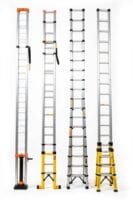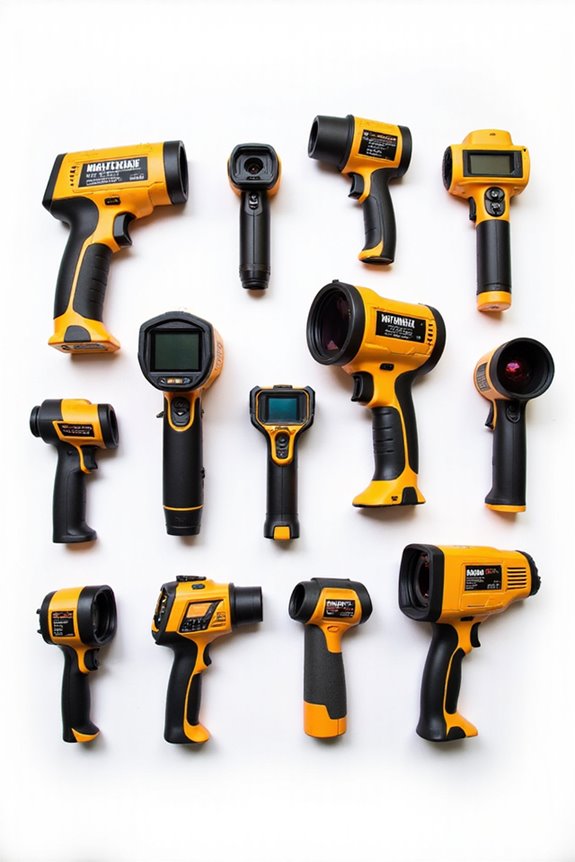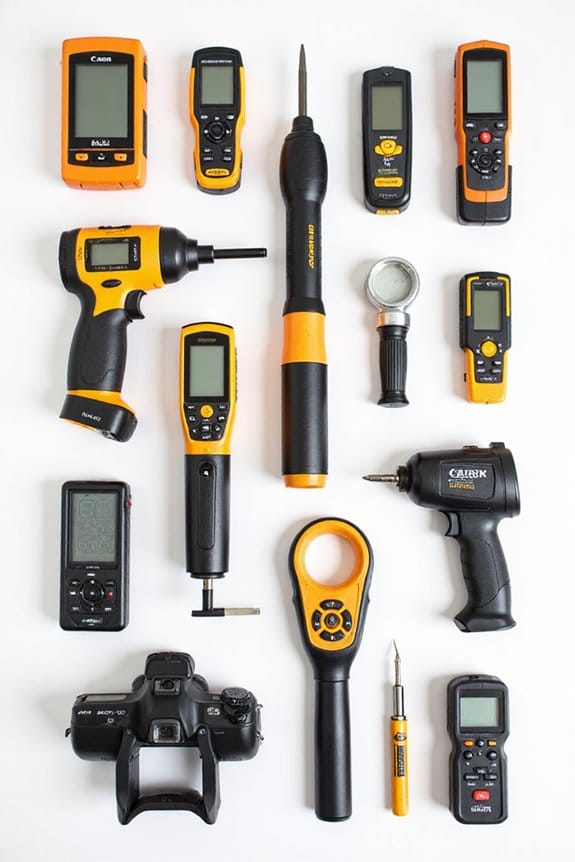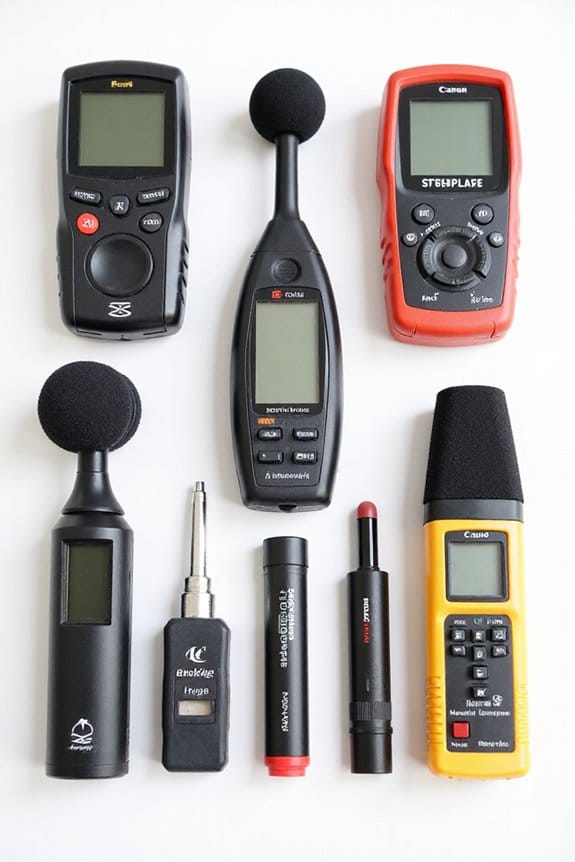As an Amazon Associate, we earn from qualifying purchases. Some links may be affiliate links at no extra cost to you. Although our opinions are based on curated research, we haven't used these products. Articles generated with AI.

5 Best Explosive Gas Detectors of 2025 – Safety First
If you want to guarantee your home is safe from explosive gases, consider these top picks for 2025: 1) The Hembisen Plug-in Detectors for dual carbon monoxide and gas detection. 2) Xalire for high sensitivity and a lifetime warranty. 3) GasKnight GK2000 for early warnings. 4) PT520A with a flexible gooseneck. 5) HSTMYFS for compact design. Remember, each has unique features that can suit your needs. Stick around to find out which is best for you!
Key Takeaways
- Hembisen Plug-in Detector: Offers dual detection for CO and combustible gases with a loud alarm and digital display for real-time monitoring.
- Xalire Gas Leak Detector: Features high sensitivity, easy installation, and a lifetime warranty, ensuring effective natural gas and propane detection.
- GasKnight GK2000: Provides early warnings with a pre-alarm, quick response time, and versatile detection capabilities, though it lacks Wi-Fi connectivity.
- PT520A Detector with Gooseneck: Equipped with a flexible gooseneck for hard-to-reach areas, it delivers rapid alerts and user-friendly features.
- HSTMYFS Detector: Compact design and easy plug-in installation allow for effective monitoring; however, it may experience occasional false alarms.
3 Pack Gas & Carbon Monoxide Detectors for Home
3 Packs Combination Gas & Carbon Monoxide Detectors, Plug in Natural Gas Detector & Carbon Monoxide...
- 【Hembisen Plug in Combination Gas & Carbon Monoxide Detectors 】 This is an upgraded 2-in-1 gas and carbon monoxide detector with plug-and-play, digital display and 85...
- 【2-in-1 Gas & CO Sensors】Adopt catalytic combustion sensor and electrochemical sensor for sharper sense of smell and accurate.
- 【Power Saving Mode Design】When there is no dangerous gas around, the combination gas and carbon monoxide detector will automatically turn on the power saving mode and...
When it comes to keeping your home safe from gas leaks, the Hembisen Plug-in Combination Gas & Carbon Monoxide Detectors stand out as an excellent choice for any house, apartment, or even hotel setting. These detectors offer reliable detection of harmful gases and are super straightforward to install. Here’s why you’ll love them:
- Dual Detection: Detects both carbon monoxide and combustible gases, like propane or methane.
- Digital Display: Clear readings of LEL or PPM levels bring peace of mind.
- Loud Alarm: An 85 dB sound will definitely grab your attention!
You’ll appreciate the simple plug-and-play feature. Safety’s never been easier!
Best For: Individuals or families seeking a reliable and easy-to-install solution for detecting gas leaks and carbon monoxide in residential or commercial settings.
Pros:
- Dual functionality detects both carbon monoxide and combustible gases.
- Easy plug-and-play installation with a digital display for clear readings.
- Loud 85 dB alarm alerts you promptly in case of danger.
Cons:
- Bright display light may be distracting in dark environments.
- Requires an electrical socket for operation, limiting placement options.
- Some users may find the sensitivity too high, leading to false alarms.
Gas Leak Detector, Natural Gas Alarm for Home & RV
Sale
Xalire Gas Leak Detector, Natural Gas Alarm for Home & RV, Plug-in Propane Detector Monitor with...
- Versatile Gas Leak Detector for Home and RVs-This gas detector is ideal for detecting natural gas, propane, and other flammable gases in homes, motorcoaches, trailers,...
- Detects Multiple Flammable Gases-The natural gas detector identifies methane, propane, LPG, LNG, butane, alcohol, coal gas, gasoline, sewer gas, and more. A reliable gas...
- High Sensitivity with Real-Time LED Display-Features an advanced sensor that provides instant gas leak detection and displays the concentration level on the LED screen...
If you’re looking for an affordable yet reliable way to guarantee safety in your home or RV, the Xalire Gas Leak Detector is a top contender. This compact device (just 2.36 inches) is lightweight and easy to install—just plug it in, and you’re good to go!
- Detection: It identifies various gases, including natural gas and propane, with high sensitivity in real time.
- Alerts: An 85dB alarm will wake you up faster than your morning coffee!
- Display: Check out the LED screen for gas concentration levels.
With a lifetime warranty, Xalire truly prioritizes your peace of mind.
Best For: Those seeking a reliable and easy-to-install gas detection solution for their home or RV.
Pros:
- High sensitivity with real-time detection of multiple gas types, ensuring safety.
- Easy plug-in installation without the need for batteries, making it user-friendly.
- Lifetime warranty provides added peace of mind for users.
Cons:
- Some users may find size limitations affect outlet placement.
- Limited to indoor usage; may not be suitable for outdoor applications without shelters.
- Testing is recommended every three months, which may require additional maintenance effort.
Natural Gas and Combustible Gas Detector for Home
Natural Gas Detector For Home + Propane Detector + Combustible Gas Detector. Plug-In Natural Gas...
- ✅ PROTECTION WITH STYLE – GasKnight Detection knows every second counts. That's why our GK2000 natural gas detector gives a pre-alarm at 2.5% LEL (a lower...
- ✅ SAVE TIME - Simple Plug & Play! Skip the hassle of complicated installations and battery replacements. Just plug the GasKnight GK2000 propane gas detector in and...
- ✅ KEEP YOUR FAMILY SAFE! – With a GasKnight gas sensor in your home, get peace of mind knowing you've taken every step to protect your family from accidents caused by...
The GasKnight GK2000 stands out as a top choice for homeowners looking for an effective natural gas and combustible gas detector. Why, you ask? Here’s a quick breakdown:
- Versatile Detection: It sniffs out natural gas (including methane and propane) for your safety.
- Early Alerts: Pre-alarm kicks in at 2.5% LEL, so you’re warned before things get serious.
- Simple Setup: Just plug it in, and you’re good to go—no messy wires or complicated steps.
- Quick Response: It detects gas in about 1.5 minutes, giving you peace of mind.
Trust me; it’s a smart investment for your family’s safety!
Best For: Homeowners and RV users looking for a reliable gas detection system to enhance safety around gas appliances.
Pros:
- Versatile detection of natural gas, propane, and combustible gases for comprehensive safety.
- Quick and easy installation with a plug-and-play design, avoiding the hassle of wires and complex setups.
- Fast response time of approximately 1.5 minutes ensures timely alerts for potential gas leaks.
Cons:
- Currently lacks Wi-Fi compatibility for remote alerts, which some users may find limiting.
- Limited range of detection might not cover larger homes effectively.
- Some users may prefer a unit with a digital display for reading gas concentration levels.
PT520A Natural Gas Detector with 17-Inch Gooseneck
PT520A Natural Gas Detector, Gas Leak Detector with 17-Inch Gooseneck, Locating The Source Like...
- Effective Gas Leak Detector: The TOPTES PT520A natural gas detector detects leaks of methane, propane, natural gas, LPG, butane, and more in tight spaces.
- Flexible Probe: The 17-inch gooseneck allows easy access to hard-to-reach areas like pipelines, storage tanks, gas fireplaces, and basements, ideal for both indoor and...
- Visual and Audible Alarm: PT520A responds in 0.5 seconds, with 7 colored bars and a 75dB alarm that increase with gas concentration. Detection range: 50-10,000 ppm...
Discovering gas leaks safely and efficiently is essential for anyone managing a home with gas appliances, and the PT520A Natural Gas Detector with its 17-inch gooseneck is an excellent choice for this task. Here’s why:
- Flexible Gooseneck: Reach tight spots like pipelines or gas fireplaces with ease.
- Quick Alerts: It responds in just 0.5 seconds with 75dB alarms.
- User-Friendly: Features like auto power-off and a mute button make it a breeze to use.
- Performance: Detects gas leaks up to 75 feet away, perfect for residential safety.
At around $40, consider it a small investment for safety. You won’t regret it!
Best For: Homeowners with gas appliances looking for an affordable and effective solution to detect gas leaks.
Pros:
- Easy-to-use design suitable for both beginners and experienced users.
- Flexible 17-inch gooseneck allows access to tight and hard-to-reach areas.
- Quick response time of 0.5 seconds and audible alerts ensure timely detection.
Cons:
- Not a substitute for professional gas detection in emergency situations.
- Some users reported delays with startup and automatic shut-off features.
- Calibration is recommended for accurate readings, particularly in well-ventilated areas.
Natural Gas Leak Detector for Home Kitchen RV
Sale
HSTMYFS Natural Gas Leak Detector, Plug-in Propane Natural Gas Detector for Home Kitchen RV,...
- Versatile Gas Detection: This gas detector is designed for home use and can detect multiple combustible&explosive gases, including LPG (methane), CNG, LPG, Propane and...
- Photoelectric Warning System: When the concentration of combustible gas reaches a preset level, the alarm emits an 85 dB audible and visual signal, alerting you to check...
- Proven Safety: Our gas detector undergoes rigorous quality management, with over a decade of successful sales to verify its stability and reliability.
Looking to keep your home kitchen or RV safe from gas leaks? The HSTMYFS Natural Gas Leak Detector is your go-to gadget. It detects multiple gases, including LPG and natural gas, ensuring you stay protected. Here’s what you need to know:
- Easy Installation: Plug it in and let it warm up for 2-3 minutes.
- Audible Alerts: You’ll hear an 85 dB alarm if gas levels spike.
- Compact Design: It’s lightweight and takes up minimal space.
- Reliable Performance: Many users report peace of mind, although some mention occasional false alarms.
It’s definitely worth considering for your safety!
Best For: Homeowners and RV users looking for reliable gas leak detection to ensure safety and peace of mind.
Pros:
- Easy Installation: Simply plug it in and it’s ready to operate after a quick warm-up.
- Audible Alerts: The 85 dB alarm provides clear auditory warnings of potential gas leaks.
- Compact and Lightweight: Its small size makes it easy to place anywhere without taking up much space.
Cons:
- Occasional False Alarms: Some users experience sensitivity to cooking fumes leading to false alerts.
- Inconsistent Readings: Detection can vary based on location and environmental factors.
- Power Dependency: Does not function during power outages due to its AC power requirement.
Factors to Consider When Choosing an Explosive Gas Detector
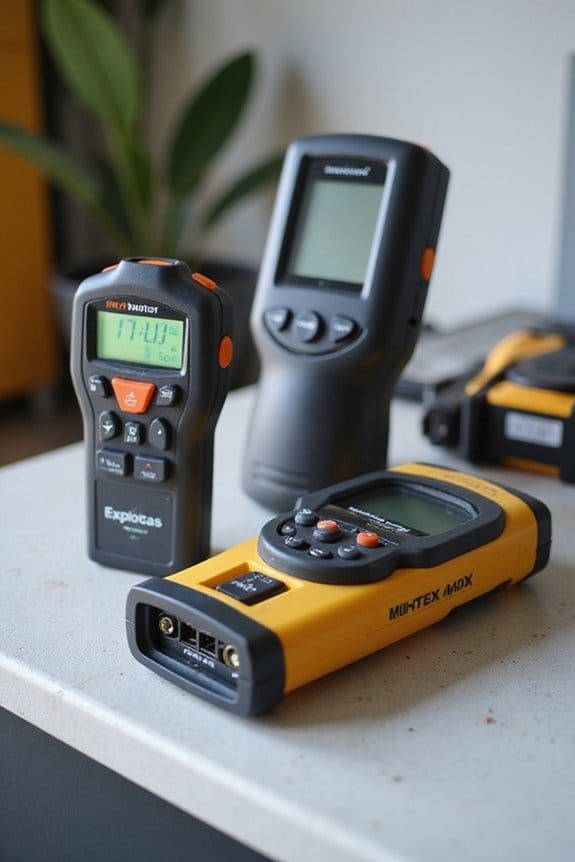
When you’re picking an explosive gas detector, it’s important to take into account a few key factors. First, think about the detection capabilities—after all, you want it to catch gas before it becomes a problem. Next, look at the installation process and alarm features because a detector is only as good as its ease of use and safety alerts.
Detection Capabilities
Choosing an explosive gas detector isn’t just about picking the first shiny device you see; it’s about understanding its detection capabilities. Here are some essential factors:
- Gas Type: Make sure your detector identifies multiple gases, like natural gas, propane, and butane.
- Sensitivity Levels: Look for detectors with high sensitivity for real-time leak detection, meaning you’ll get alerts right away.
- Pre-Alarm Thresholds: Check if it has settings for early warning at around 2.5% LEL, helping avoid dangerous situations.
- Sensor Technology: Consider the sensor type—catalytic combustion or electrochemical sensors typically enhance accuracy.
- Visual Displays: Some detectors show gas concentration levels, giving you a clear idea of what’s going on. Keeping safe has never looked so straightforward!
Installation Process
Installing an explosive gas detector can be a straightforward task, especially since many devices offer a plug-and-play installation process. Here’s what you need to evaluate:
- Location: Choose spots near gas appliances or enclosed areas like basements. Make sure the installation site has no obstructions and is close to a power supply.
- Warm-Up Time: Most detectors need about 2-3 minutes to warm up after installation, so don’t rush things!
- Regular Testing: Remember to test your detector every three months. It’s a simple way to make sure it’s still working efficiently.
Alarm Features
While not all alarm features are created equal, they play a vital role in the effectiveness of explosive gas detectors. Here are some must-have features to take into account:
- Audible Alarm: Typically around 85 dB, it effectively alerts you to gas presence. You’ll definitely notice it!
- Visual Displays: LED screens give real-time gas concentration levels, helping you assess the situation at a glance.
- Pre-Alarm Notifications: These trigger at lower gas concentrations for early warnings, allowing you to take action before things get serious.
- Response Time: Look for detectors that activate within seconds—timing is everything!
- User-Friendly Features: Options like mute buttons or adjustable sensitivity settings make the detector easy to customize for your needs. Remember, safety doesn’t have to be complicated!
Sensitivity Levels
When it comes to explosive gas detectors, sensitivity levels are essential for ensuring your safety. Here are a few key points to take into account:
- Detection Ability: Sensitivity refers to how well a detector can identify low concentrations of gases. This early warning can be a lifesaver!
- Measured in PPM: Most detectors have thresholds in parts per million (PPM), useful for spotting gases like methane and propane.
- Calibration Options: Some models allow you to tweak sensitivity, making them more effective for your specific environment.
- False Alarms: Higher sensitivity can mean more false alarms from innocent culprits like cooking fumes.
Choosing the right sensitivity is critical, especially in high-risk areas. Don’t skimp on this feature!
Power Source Options
Choosing the right power source for your explosive gas detector is essential for effective monitoring. Here are some options to evaluate:
- AC Power: Plugging your detector into a standard outlet means it runs continuously. No batteries to replace, just good ol’ reliable electricity!
- Battery-Operated: Great for portability! These detectors work during power outages but remember to check those batteries regularly.
- Combination Models: Some detectors offer both power options. Flexibility is key! Choose the best fit for your home’s layout.
Keep in mind, the installation location matters. If you go for a plug-in model, make sure it’s near an outlet. Battery models can go rogue in remote spots—perfect for catching sneaky gas leaks!
Warranty and Support
Investing in a reliable explosive gas detector means looking beyond just features and performance; you’ll also want to pay close attention to warranty and support options. Here are some key factors to reflect on:
- Warranty Duration: A longer warranty suggests the manufacturer’s confidence in the product.
- Satisfaction Guarantee: Look for satisfaction guarantees or refund policies to safeguard your investment.
- Lifetime Warranties: These provide assurance for long-term use, making them a savvy choice.
- Coverage Details: Check if the warranty includes parts and labor; this can really save you money.
- Access to Support: Confirm you can easily reach customer service for any issues or claims.
A solid warranty and support structure means you can focus on safety without worries!
Frequently Asked Questions
How Often Should I Test My Gas Detector?
Did you know that nearly 70% of gas detector failures happen because people don’t test them regularly? To keep yours in top shape, you should test it once a month. Here’s a quick list:
- Monthly Testing – A simple check guarantees it’s functioning.
- Battery Change – Replace batteries annually, or as needed.
- Sensor Replacement – These typically last 2-5 years, so stay alert!
Being proactive can save you from surprises.
Can Gas Detectors Expire or Degrade Over Time?
Yes, gas detectors can expire or degrade over time! Here’s what you need to know:
- Lifespan: Most detectors last 5-7 years. Check the manufacturer’s guidelines.
- Calibration: They might need calibration for accuracy—don’t skip this step!
- Environment: Extreme conditions can speed up degradation.
Where Should I Install My Gas Detector for Best Performance?
Absolutely, installing your gas detector is essential, almost as important as finding gold in your backyard! For peak performance, follow these steps:
- Near Potential Sources: Place it close to stoves, heaters, or gas appliances.
- Height Matters: Mount it at eye level to guarantee accurate readings, as gases rise.
- Ventilation: Avoid corners or enclosed spaces where gas could linger.
Trust me, correct placement makes all the difference—you’ll sleep easier knowing you’re covered!
Do Gas Detectors Require Regular Maintenance or Servicing?
Yes, gas detectors do need regular maintenance! Here’s a quick guide:
- Check Sensors: Make certain they’re functioning every few months. They can get lazy, just like us!
- Calibrate Annually: Have it professionally calibrated once a year. Think of it as the detector’s yearly check-up.
- Replace Batteries: Some models need new batteries every 6-12 months.
Keeping up with this maintenance guarantees your safety stays in top shape—just like a well-oiled machine!
Are There Any Specific Safety Certifications to Look For?
When you’re choosing a gas detector, you can’t just pick one off the shelf like a candy bar. Look for these safety certifications:
- UL (Underwriters Laboratories): Means it’s been tested for safety.
- ATEX: Shows compliance with European standards for explosive atmospheres.
- CSA (Canadian Standards Association): Indicates it meets Canadian safety regulations.



